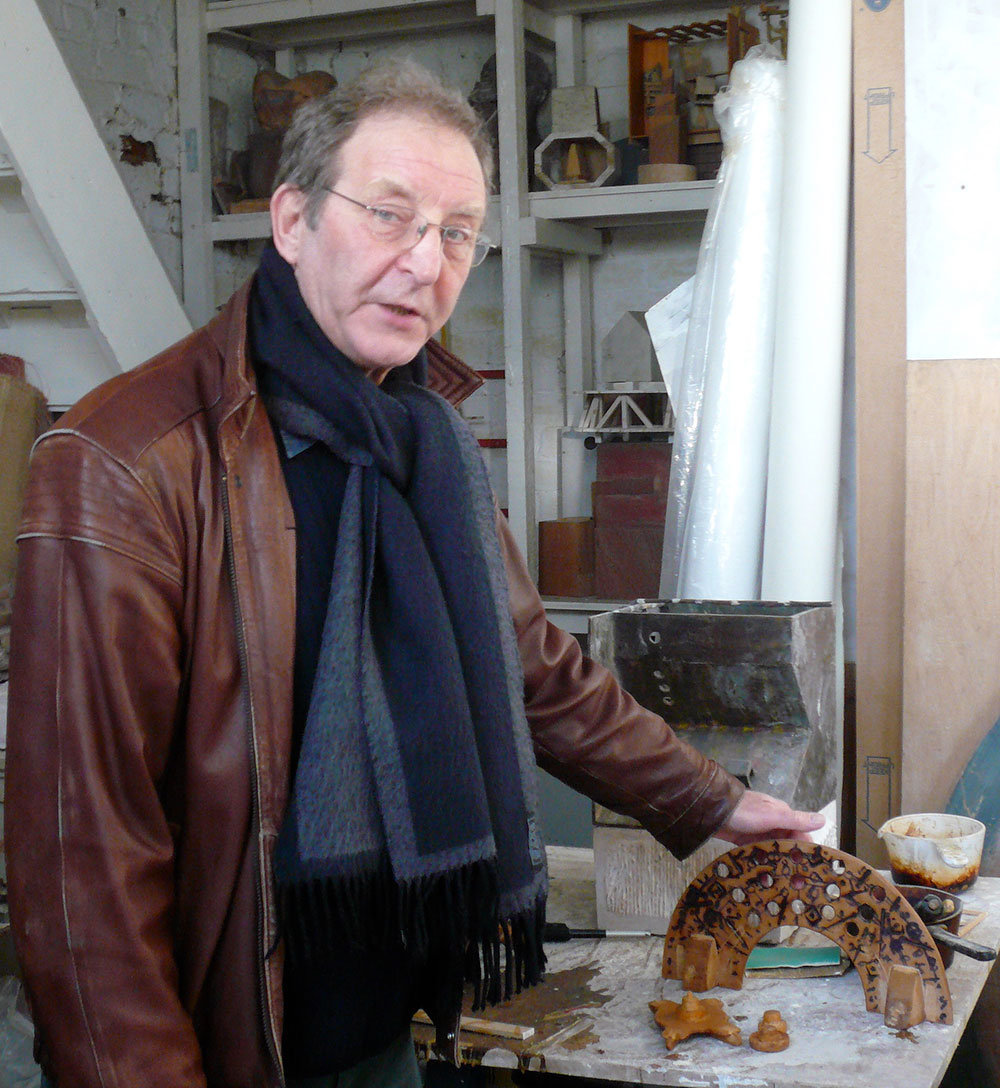
April 2011. A number of my recent sculptures and drawings have been given the title Measuring Personal Space. This designation has been chosen to represent a series of related terms which I feel are of great significance in our time. These include the often stated need for ‘personal space,’ the more contemporary notion of the ‘comfort zone,’ the desire to become clear of other people, to be able to free oneself from social and professional ties, at least for a moment, and to achieve in so doing some ‘quiet time.’ These common phrases efficiently indicate the complex issues which arise from a consideration of the individual’s place in the world and the, necessarily fragile, balance one must achieve between the public and the private spheres.
Within the notion of private property there is a clear and definable space, which is shaped by, and understood as, our immediate environment. This space is easily measured by the standard tools. However, this same space, despite its clearly defined boundaries, is used in an entirely personal manner by each of us, a manner which is not susceptible to determination by the metre rule, the kilogram and the second. How we might feel comfortable within these solid limits is purely a question of individual temperament and choice and these lie far beyond the reach of the accepted standards of measurement. One must search for an understanding of such things using quite different tools and thought processes. These tools must themselves first be designed and constructed. The thought processes will be inseparable from this activity.
One of the many curiosities within this arena of activity is that, from time to time at least, that public space also seems to belong to us and is defined by us to an extent, whether these public spaces be in the landscape or in the city. Although we do not own this type of space, and it may lack the clearly defined and certain limits of our living spaces, we know that it, too, is ours; we are in the process of creating it and defining it as we move through it. Public space necessarily has some thing in common with private space. We are the common factor.
I have recently experimented with two principle approaches in order to make some sense of this complex and typical human experience. The first of these is to make structures which may equate to living rooms and to other domestic environments. Here the built structure itself is a form, often geometric in character, which then becomes a support, as the walls and floors, for smaller forms and for the images and objects which inhabit our personal space. These small scale works, concerned with interior and exterior spaces and viewed in my work from the outside, are abstracted; they are not necessarily limited to specific locales as would be the case in our ‘real’ world. They are theoretical in character. Bronze is appropriate to these works, partly because it offers the opportunity to make statements which, to some extent, relate to the classical tradition and are, therefore, a part of that historical continuum. Bronze also provides the necessary distance from the world.
The second approach allows the work to be made at a much larger size, one in which vertical and horizontal planes form the limits to a human-scale inhabitable space. These sculptures have a more decided division of action; the floor pieces being physical and very much a part of our experience of the world and the wall pieces occupying a spatial plane associated ideas, creative thought and the imagination. Here the matériel of the quotidian life, and the effects of its presence upon us, may be examined more closely. These wood sculptures are marked with painted forms and have texts inscribed upon their surfaces; they are complexes in which an immediacy is paramount. They are concrete in character. Wood is exactly the material which connects them to the world.
Each approach attempts to unfold the interlocking spheres of the public and private and to determine why, and how, one might take precedence over the other at various times as we move through them. The type of ‘measurement’ required here is philosophical in character. Metaphorical tools for these speculative activities have been produced in order to examine the place of private thought in the midst of a very public world. These are the sculptures.
BILL SCOTT
April 2011
Photo credit: Owen Griffith